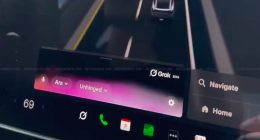It has been decreed by fate and gods who sit above us, that one day, every tech company will turn to fintech. Latest to follow suite, is Google, who is apparently working on a Google smart debit card, leaked pictures by TechCrunch signal. The card will be linked to Google’s existing payments app, Google Pay, but take it to the nth degree.
So far, Google Pay can work transactions between users through online mediums. With the introduction of a Google card, not only will the possibility of offline retail transactions become a reality, but Google will be able to limit the middle man’s (banks) participation. Google could possibly end up becoming a fintech company, charging interchange fees from users, splitting the profits with its banking partners. Moreover, transactions provided by the card could help identify offline spending patterns of users, helping build a stronger profile on users for ad targeting. Google could also end up providing all the services a bank does, including loans, stock brokerage, financial advice, accounting and insurance, turning into a bank in itself.
The card will also provide better security measures to users, where they can lock, deactivate, or permanently disable the card if they will so. Moreover, history of the card’s transactions will be available to users through Google Pay, which can not only help keep spending in check but can also provide better surveillance.
The card will come with a chip to complete transactions, along with the user’s name. It will also carry the name of the bank with which the account has been linked. This design could change with time, as Google reaches closer to the end product. The card will be able to complete transactions without any physical contact, i.e. by just holding it to a card reader. It is worth noting that till now, only Visa chips are confirmed for the card. However, Google can expand this function to include Mastercards as well.
The company might also introduce a virtual version of this card, not only for online purchases but also for bluetooth-based mobile payments. In case of a physical card being misplaced, users can lock it and continue to complete transactions through the virtual version, which will carry a different number system than the actual card. Moreover, if users suspect hacker involvement in their virtual cards, they can reset it anytime they want.
However, as surprising as it may all sound, this isn’t the first time Google is getting into a physical payments card business. A few years ago, Google tried experimenting with the ‘Google Wallet card’, which was later discontinued in 2016. The physical Google Wallet Card was an optional addition to the Google Wallet app, which allowed users to make purchases at point-of-sale (in stores or online) drawing from funds in their Google Wallet account, attached debit card account, or bank account.
The card could also be used to withdraw cash at ATMs with no Google-associated fee, and could be used like a debit card for virtually any purpose, including such things as renting a car.




